How Mater Dei has changed since its founding
Every Monday through Friday, Mater Dei students step on to campus and prepare for another school day. Students eat lunch in the LeVecke, play sports in the Meruelo Athletic Center, swim in the pool, and practice on the outdoor athletic fields.
However, when the school opened its doors in 1950, under principal Father Joseph L. Eyraud, none of those places existed. The campus looks vastly different now from that opening day in 1950, with many of the features now associated with the school, not yet built. From that humble beginning, Mater Dei has continued to update its campus.
Mater Dei Football Head Coach and alumnus Bruce Rollinson explained how the early version of the campus when he attended the school in the 60s consisted of only 4 wings of classrooms, a chapel, a small gym, a football field, and a “grotto” in the center that was completely asphalt. While the campus was certainly smaller than it is today, it set the foundation for what Mater Dei would later
Almost a decade after graduating in 1967, Coach Rollinson returned to work on campus in 1976, just as big changes were on the horizon for the campus. Just a few years earlier, the school launched its drama department. A separate addition to the athletic department was an all-sport locker room located where the current security office is, as well as an outdoor weight room.
With the 1980s came the 500 and 600 wings and the introduction of portable classrooms for the growing number of students on campus. Portable classrooms hosted new co-curricular activities such as Campus Ministry, ASB, and Choir. They also served as extra classrooms for subjects like history and English.
In 1990, Mater Dei saw a massive change to the campus: the Grotto. By tearing up the old grotto in the center of campus, president Father John Weling set about turning it into a park-like common area for the campus.
Religious studies teacher and Mater Dei alumna of ‘93 Maurisa Talarico, attended Mater Dei during construction.
“It […] allowed the students to be connected in community and prayer in countless ways, because the space is more inviting, the space is more inclusive, the space is more accessible,” Talarico said.
When Talarico returned to teach in 2000, principal Frances Clare and president Patrick Murphy set their sights on an incredible feat of even more renovation for the Mater Dei campus: MD 2000, “the plan to bring Mater Dei into the 21st century.”
Phase 1 of MD 2000 included: the parking lot, the Gordon and Gail Lee Chapel and Campus Ministry Center, the Antone and Anna Borchard Family Library, the Academic Services Complex, the Reed and Angela LeVecke Student Activities Complex, and Shamrock Plaza.
Phase 2 included: the Outdoor Athletics Complex, the track, the football and soccer fields, the Meruelo Athletic Center, and the William Lyon Homes Aquatics Center. Additionally, in the 2000s, the 700 and second level 400 wings were built. With the introduction of air conditioning and fiber optic windows, classrooms became a more workable space for students and teachers alike. The years 2012 and 2013 would see more improvements with the addition of the Andry Golf Practice Facility, the expansion of the Aquatics Center, and the update of the Library and Learning Commons. In 2015, a memorial called the “Sentinels of Freedom” was built in the Grotto to honor Monarchs who served in the military and those who were killed in action.
The school continues to renovate into more recent years. In 2019, they finished construction on the new parking structure. Individual classrooms continued to be updated with the addition of Apple TVs in almost every classroom by 2020. Just this fall, the new, remodeled ASB office was opened for use.
ASB class treasurer and senior Kathleen Brown explained how much the renovations in recent years have shown just how much the school wants its students to succeed.
“The physical changes have obviously helped, but it’s just like Mater Dei,” Brown said. “They really want the best for the students.”
Mater Dei has made strides in updating its campus in ways that reach a wider range of students and inspire even more to come in the future. Now, with plans in action to build a new Performing Arts Center on campus, Mater Dei continues the cycle of change. Talarico notes that the administration is what is driving this ever-flowing innovation of campus.
“We have an administration that [says] ‘the sky is the limit,’” Talarico said. “They don’t say, ‘no,’ they say, ‘what’s next?’”
Your donation will support the Student Publications Department at Mater Dei High School. Your contribution will allow us to keep our equipment up to date and cover our annual website hosting costs.




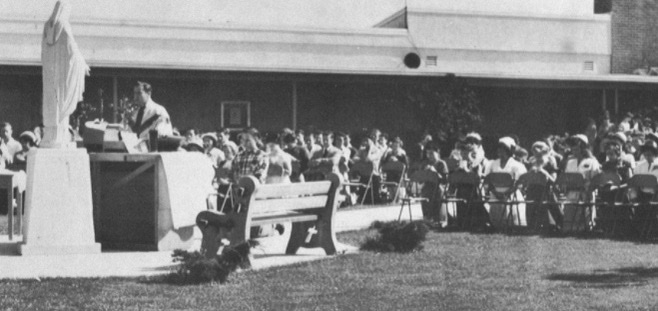
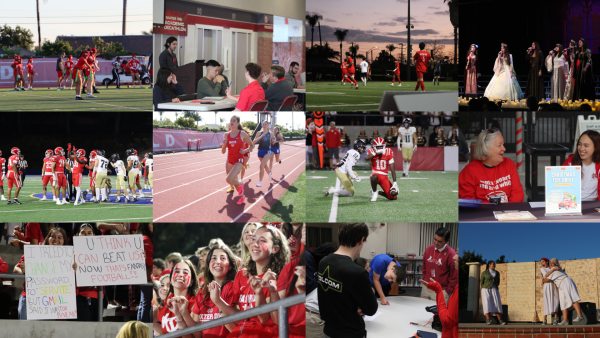

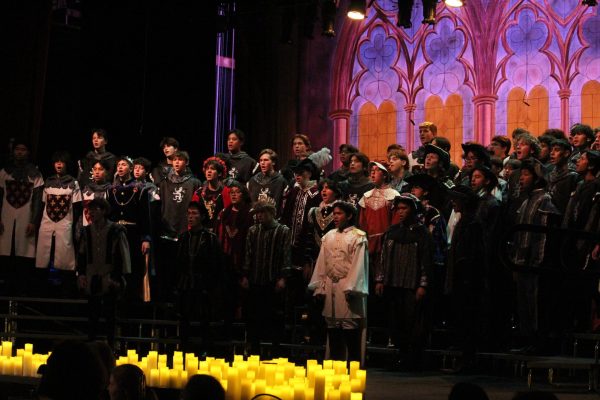

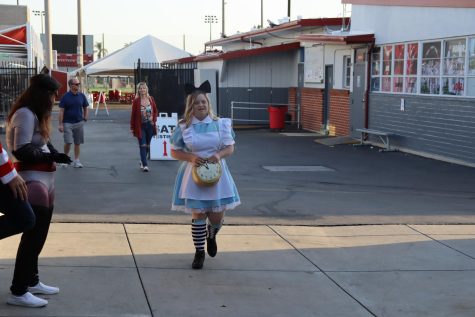

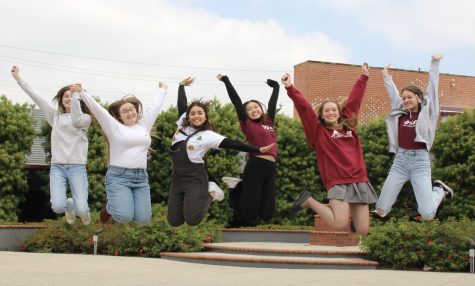

![PLAYING A ROLE: Sister Charis (right) of Heart of Jesus Retreat Center applies costume makeup for Sacred Heart Kids Club Staff for a video. Staff members are expected to participate in Kids Club events, including videos, skits, games, and other activities. These activities help the kids understand the topics being discussed, such as the seven sacraments and their purposes, and set examples for the kids. “You get to work with [people] your own age, and it’s really just tons of fun,” Sister Paula said.](https://thescarletscroll.com/wp-content/uploads/2022/03/sacredheart-475x316.jpg)
![SMILE FOR THE CAMERA: The 1988-89 yearbook shows the first Scarlet Scroll staff with their advisor, Susan Diaz. As a new publication, the newspaper staff had to put extra care into making sure what they were reporting on set a positive precedent for the paper on campus. “The administration at the time was very afraid that the Scroll would immediately turn into a format where students could just take pop shots at [them],” Gene Jimenez, a member of the 1988-89 staff, said. “And when we showed them that we could actually produce [something] as semi-responsible adults, it was a big deal.”](https://thescarletscroll.com/wp-content/uploads/2021/11/doc00617420211117152104-copy-317x475.jpg)